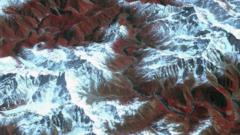The dam project, presided over by Chinese Premier Li Qiang at a ceremony held on Saturday, is expected to surpass the world's current largest dam, the Three Gorges Dam, in both size and energy output. With an estimated cost of 1.2 trillion yuan (approximately $167 billion), the project aims to enhance ecological protection and economic development, according to Chinese officials.
However, critics argue that the dam could enable China to exert control over the river’s flow, directly affecting water availability in India’s northeastern states and Bangladesh. Experts warn that this could further threaten the livelihoods of millions in both countries. India's Arunachal Pradesh Chief Minister Pema Khandu has raised alarms over the significant risks posed to local tribes and their land, foreseeing a potential disaster if the dam operates without regard for downstream impacts.
India has previously communicated its worries about such mega-dam projects to China, urging for more transparency and consideration of downstream nations' interests. In response, China maintains that it has the sovereign right to develop its river resources, asserting that it will factor in the implications for downstream areas.
The dam, located in the Yarlung Tsangpo canyon—recognized as the world's largest and deepest canyon—is expected to reshape the hydropower landscape in the region. Chinese authorities are progressing to create tunneling infrastructure aimed at diverting parts of the river’s flow to fuel five additional hydropower stations.
While China promotes the dam as a means to generate clean energy and foster local prosperity, dissenting voices highlight the potential environmental damage and the impact on the indigenous Tibetan population, who have historically faced repression while protesting against such projects.
As tensions mount, regional dynamics surrounding this massive infrastructural development remain fraught with uncertainty and potential conflict.
However, critics argue that the dam could enable China to exert control over the river’s flow, directly affecting water availability in India’s northeastern states and Bangladesh. Experts warn that this could further threaten the livelihoods of millions in both countries. India's Arunachal Pradesh Chief Minister Pema Khandu has raised alarms over the significant risks posed to local tribes and their land, foreseeing a potential disaster if the dam operates without regard for downstream impacts.
India has previously communicated its worries about such mega-dam projects to China, urging for more transparency and consideration of downstream nations' interests. In response, China maintains that it has the sovereign right to develop its river resources, asserting that it will factor in the implications for downstream areas.
The dam, located in the Yarlung Tsangpo canyon—recognized as the world's largest and deepest canyon—is expected to reshape the hydropower landscape in the region. Chinese authorities are progressing to create tunneling infrastructure aimed at diverting parts of the river’s flow to fuel five additional hydropower stations.
While China promotes the dam as a means to generate clean energy and foster local prosperity, dissenting voices highlight the potential environmental damage and the impact on the indigenous Tibetan population, who have historically faced repression while protesting against such projects.
As tensions mount, regional dynamics surrounding this massive infrastructural development remain fraught with uncertainty and potential conflict.




















